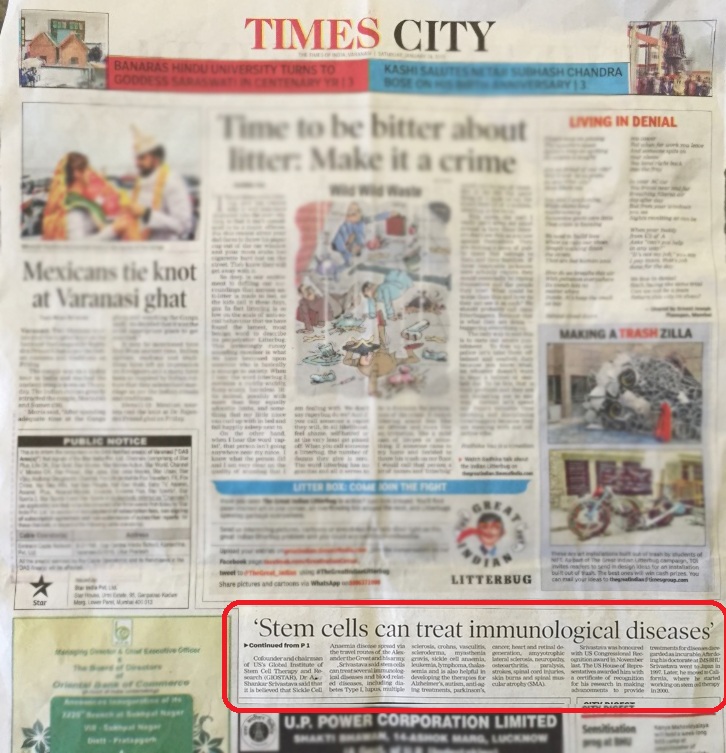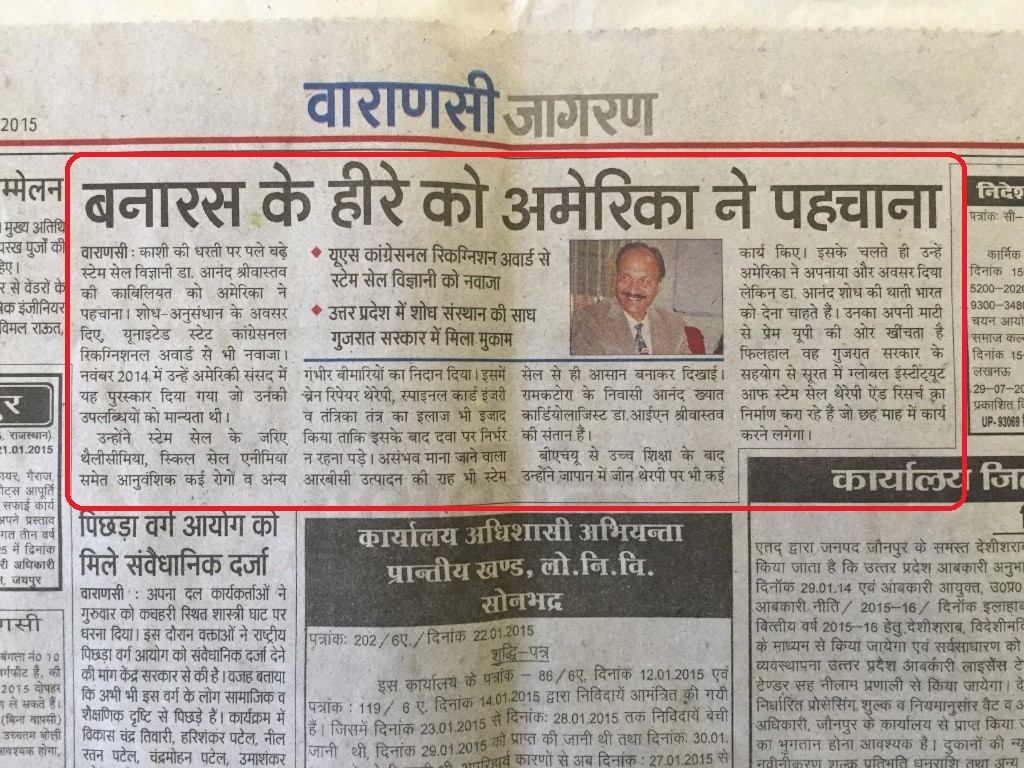Diamond of Banaras Dr. Anand Srivastava Recognized by the US
Diamond of Banaras Dr. Anand Srivastava Recognized by the US
GIOSTAR CEO On the “Dr. Marissa Show” Talk on Journey of Stem Cell Science – Nov 2014
GIOSTAR CEO On the “Dr. Marissa Show” Talk on Journey of Stem Cell Science – Nov 2014
Rome – GIOSTAR CEO with Prince Nicolo and Princess Rita of Rome Sep. 2014
Rome – GIOSTAR CEO with Prince Nicolo and Princess Rita of Rome Sep. 2014
- GIOSTAR CEO with Princess Rita of Rome
- GIOSTAR CEO with Prince Nicolo of Rome and Princess Rita of Rome
- GIOSTAR CEO with Prince Salman of Saudi Arabia
GIOSTAR CEO On the “American Dream” TV Discussing Stem Cell Science
GIOSTAR CEO On the “American Dream” TV Discussing Stem Cell Science
Mannose supplements induce embryonic lethality and blindness in phosphomannose isomerase hypomorphic mice
Mannose Supplements Induce Embryonic Lethality And Blindness in Phosphomannose Isomerase Hypomorphic Mice
Associated Data
Abstract
Patients with congenital disorder of glycosylation (CDG), type Ib (MPI-CDG or CDG-Ib) have mutations in phosphomannose isomerase (MPI) that impair glycosylation and lead to stunted growth, liver dysfunction, coagulopathy, hypoglycemia, and intestinal abnormalities. Mannose supplements correct hypoglycosylation and most symptoms by providing mannose-6-P (Man-6-P) via hexokinase. We generated viable Mpi hypomorphic mice with residual enzymatic activity comparable to that of patients, but surprisingly, these mice appeared completely normal except for modest (∼15%) embryonic lethality. To overcome this lethality, pregnant dams were provided 1–2% mannose in their drinking water. However, mannose further reduced litter size and survival to weaning by 40 and 66%, respectively. Moreover, ∼50% of survivors developed eye defects beginning around midgestation. Mannose started at birth also led to eye defects but had no effect when started after eye development was complete. Man-6-P and related metabolites accumulated in the affected adult eye and in developing embryos and placentas. Our results demonstrate that disturbing mannose metabolic flux in mice, especially during embryonic development, induces a highly specific, unanticipated pathological state. It is unknown whether mannose is harmful to human fetuses during gestation; however, mothers who are at risk for having MPI-CDG children and who consume mannose during pregnancy hoping to benefit an affected fetus in utero should be cautious.—Sharma, V., Nayak, J., DeRossi, C., Charbono, A., Ichikawa, M., Ng, B. G., Grajales-Esquivel, E., Srivastava, A., Wang, L., He, P., Scott, D. A., Russell, J., Contreras, E., Guess, C. M., Krajewski, S., Del Rio-Tsonis, K., Freeze, H. H. Mannose supplements induce embryonic lethality and blindness in phosphomannose isomerase hypomorphic mice.
A potentially lethal form of rare congenital disorder of glycosylation (CDG), type Ib [CDG-Ib; or phosphomannose isomerase (MPI)-CDG] can be treated with mannose as a dietary supplement (1). Supplementation overcomes impaired glycosylation caused by hypomorphic mutations in MPI because mannose bypasses the impaired conversion of fructose-6-phosphate (Fru-6-P) to mannose-6-phosphate (Man-6-P), which is the major source of Man-6-P derived from glucose. Mannose alleviates patients’ stunted growth, hypoglycemia, liver dysfunction, coagulopathy, and protein-losing enteropathy (2). Exogenous mannose is converted to Man-6-P by hexokinase (HK), replenishing this deficient precursor needed for multiple glycosylation pathways, including the N-glycosylation pathway, viaphosphomannomutase (PMM2); excess Man-6-P is catabolized by the residual MPI activity (Scheme 1). Patients on this therapy survive and lead a normal life without obvious side effects (2).
Mannose metabolic pathway. Man, mannose; Glc, glucose; HK, hexokinase; MPI, phosphomannose isomerse; PMM2, phosphomannomutase2; GDP-Man, GDP-mannose; Dol-P-Man, dolichol phosphate mannose; LLO, lipid linked oligosaccharide.
To model MPI-CDG and follow the effects of mannose therapy, we previously knocked out the single Mpigene in mice, leading to death at embryonic day 11.5 (E11.5) due to abnormalities in both placenta and the embryo. Mannose could not rescue because Man-6-P accumulates to toxic levels, limiting ATP and inhibiting several glycolytic enzymes (3). However, because patients with MPI-CDG have residual enzymatic activity, hypomorphic mice would offer a more patient-relevant model than would a complete Mpi knockout (KO). Here, we describe a viable, hypomorphic mouse line containing a patient-derived mutation that reduced enzymatic activity and altered mannose metabolism, as predicted. While a minority of mutant embryos died in utero, surprisingly, adolescent and adult mice had none of the expected symptoms reported in patients with MPI-CDG; these Mpi-deficient mice had a subclinical phenotype. However, if dams consumed mannose during pregnancy, most of the Mpi hypomorphic embryos died, and nearly half of the survivors were born with severe ocular defects. The combination of reduced enzymatic activity and the increased mannose load altered its metabolic flux, leading to Man-6-P accumulation in the eyes.
Mannose is widely used as a “natural” treatment for urinary tract infections; this seemingly innocuous sugar may have a negative effect for some pregnant women. While the frequency of MPI-CDG is unknown, women at risk for having subsequent MPI-CDG children who intend to take mannose as a “prenatal therapy” may inadvertently cause other side effects.
Read More : Click Here








